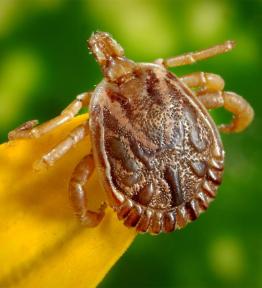- Managing your Practice
-
- Your Benefits
-

Introducing the ultimate Club MD experience
From work to play, and everything in between, we provide you with access to hundreds of deals from recognizable, best-in-class brands, elevating every facet of your life – from practice supports to entertainment, restaurants, electronics, travel, health and wellness, and more. Your Club MD membership ensures that these deals are exclusive to you, eliminating the need to search or negotiate.
Welcome to the ultimate Club MD experience. Your membership, your choices, your journey.
-
- Advocacy & Policy
-
- Collaboration
- News & Events
-

Stay Informed
Stay up to date with important information that impacts the profession and your practice. Doctors of BC provides a range of newsletters that target areas of interest to you.
Subscribe to the President's Letter
Subscribe to Newsletters
-
- About Us
-

Tick talk: What you need to know about ticks & Lyme disease
July 5, 2019
Together for Health
With the warmer summer months comes an increase in the number of ticks, including those that carry the most common tick-borne disease, Lyme disease. Transmitted through a tick bite, the disease can cause symptoms such as rash, fevers, chills, fatigue, body aches, headache, neck stiffness and swollen lymph nodes. And if left untreated, Lyme disease can lead to more serious health issues such as paralysis and heart and neurological disorders.
Ticks are small, spider-like bugs most commonly found in long grasses and on bushes and trees, but they can also be found in urban settings. In the last decade the number of reported cases of Lyme disease has increased dramatically, 144 cases in 2005 to 2,025 cases in 2017; however the Canadian Lyme Disease Research Network believes the number of actual cases to be much higher.
 That’s because Lyme disease continues to be very difficult to diagnose. It’s a complex disease that can present with multiple unusual symptoms. In the early stages these symptoms are flu-like, but if left untreated the infection can spread causing nerve tissue damage, neurological problems or heart issues. This can lead to mistaken diagnoses including meningitis, arthritis, stroke, heart disease, Bell’s palsy, and multiple sclerosis.
That’s because Lyme disease continues to be very difficult to diagnose. It’s a complex disease that can present with multiple unusual symptoms. In the early stages these symptoms are flu-like, but if left untreated the infection can spread causing nerve tissue damage, neurological problems or heart issues. This can lead to mistaken diagnoses including meningitis, arthritis, stroke, heart disease, Bell’s palsy, and multiple sclerosis.
Here are some steps you can take to protect yourself and limit your exposure to ticks and tick bites:
- Wear a Health Canada-approved insect repellent containing DEET on exposed skin or clothing
- Wear long pants tucked into socks or boots, long sleeves and light colours to make it easier to spot ticks
- Stay on trails when hiking in the woods or walking in areas of long grass
- Do a full body check when you get home — especially toes, knees, groin, armpits and scalp — and check your pets, too
- Keep ticks away from home by keeping grass mowed, removing brush and fallen leaves, cleaning up areas under bird feeders to ward off small mammals that can carry ticks and keep woodpiles dry and away from the house
What to do if you find a tick on yourself:
- Remove it as quickly as possible — the risk of Lyme disease increases with the length of time it’s attached
- Use tweezers or a “tick key” to grasp the tick’s head as close to the skin as possible and pull slowly, without twisting, until it comes out
- Once the tick has been removed, clean the bite area with soap and water, then apply an antiseptic cream. Wash hands with soap and water or use alcohol-based hand rub
- See a doctor if you’re unsure of how long the tick has been attached or if it’s been at least 24 hours
One of the most common early signs of Lyme disease is an expanding skin rash that looks like a “bull’s eye.” If this or any other symptoms appear within days or weeks after being bitten by a tick, consult your family doctor or other healthcare professional.
Media stories on this topic:
CBC News – 'Tis the season for ticks in southern B.C.
CTV News – Lyme disease patients push for better treatment, diagnosis and prevention
Global News – Tick-tock: Ticks are spreading across Canada. Here are their new homes




